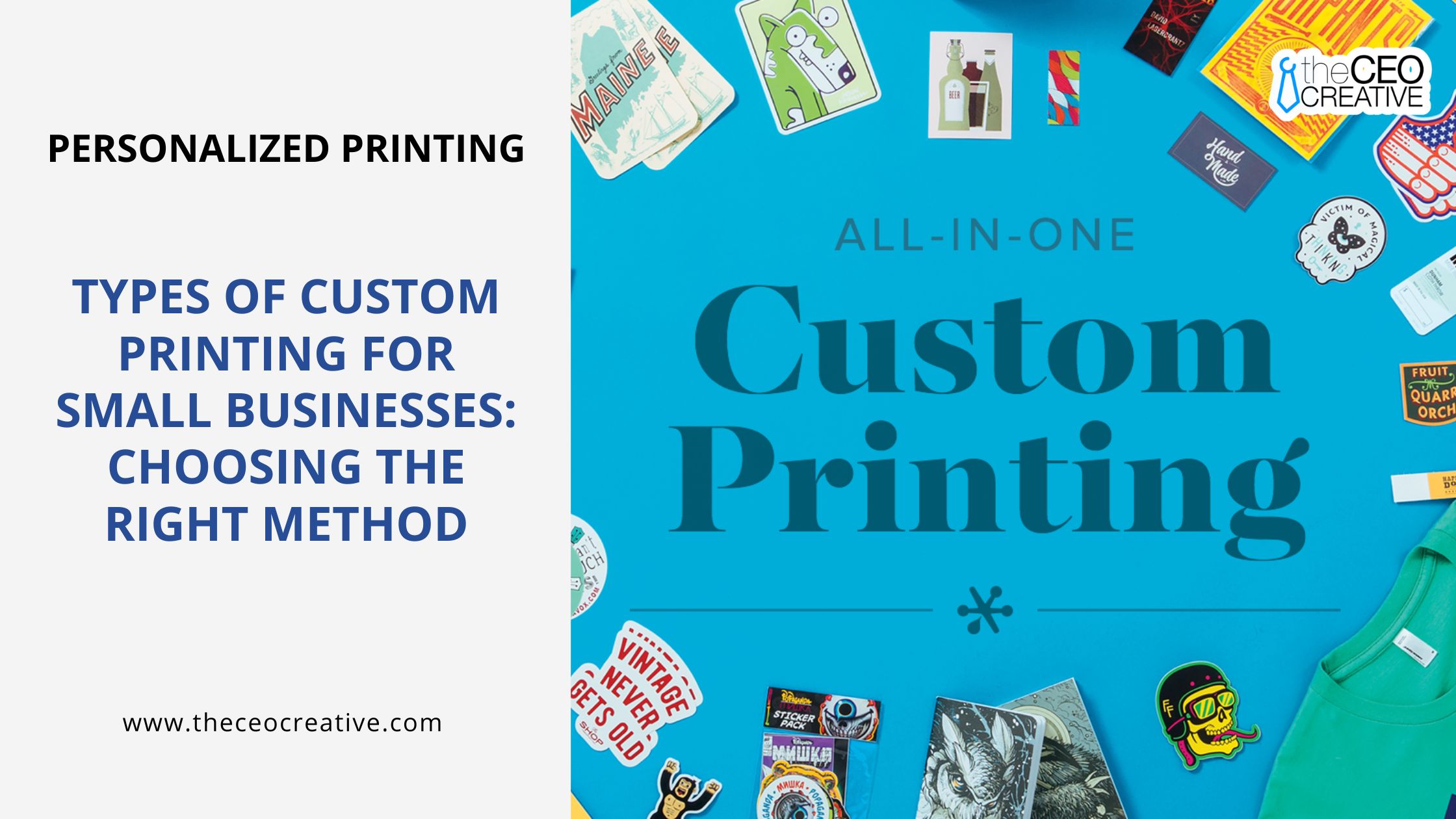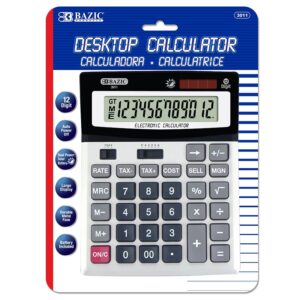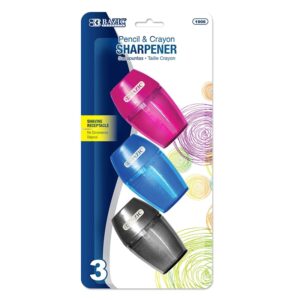Introduction
Greetings, fellow entrepreneurs! Ever stepped into a shop and found yourself captivated by a stunningly designed shirt or an attention-grabbing company logo? That’s the allure of personalized printing! If you’re considering showcasing your brand on T-shirts, mugs, or tote bags, knowing the various personalized printing techniques can propel your business forward. Custom printing not only adds an individualized flair but also connects with customers in a special way. Excited to delve into the vibrant realm of personalized printing? Let’s uncover the options available to us!
Understanding Custom Printing
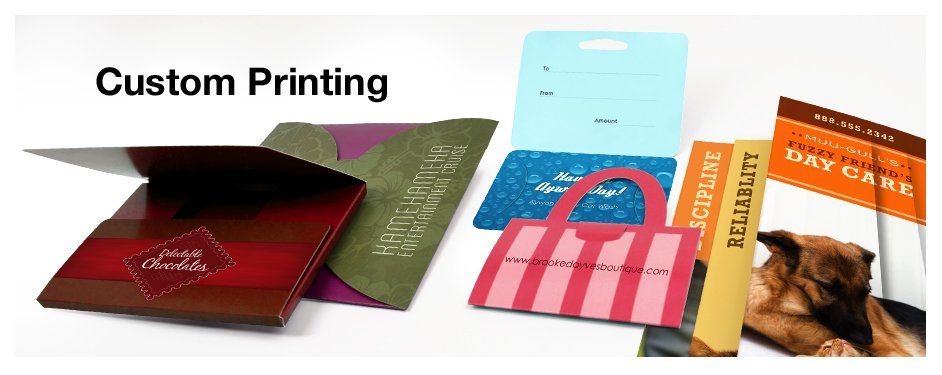
Definition and Importance for Small Businesses
Custom printing empowers your business to distinctively communicate in a bustling marketplace. Fundamentally, it involves creating specialized prints precisely aligned with your business requirements – consider items like logo-emblazoned apparel, bespoke packaging, or one-of-a-kind marketing collateral. For smaller enterprises, this transcends mere aesthetic enhancements like logos and colors; it’s about establishing a marketplace presence that proclaims, “We’re present, and we’re distinct!”
Why does custom printing hold such significance for small businesses? Primarily, it’s about achieving prominence. In an environment where consumers face an overwhelming array of options, a distinctive visual identity can render your business more unforgettable. Secondly, custom printing offers a budget-friendly alternative for marketing products and services when compared to other advertising avenues. Lastly, there’s the advantage of adaptability. Require a hundred units for an unexpected event? Custom printing can frequently handle swift production timelines and limited runs, suiting the dynamic nature of business.
How Custom Printing Enhances Branding
Branding extends far beyond simply a logo or a tagline; it encompasses an entire experience. Custom printing plays a crucial role in shaping this experience by providing a tangible representation of your brand’s identity. To illustrate, consider a quaint, neighborhood bakery. By using custom printed bread bags adorned with your logo and a memorable tagline, you’re not merely distributing your freshly baked bread; you’re also sharing a snippet of your brand’s narrative with the world.
Here’s how custom printing elevates your branding efforts:
– Uniformity Across All Interactions: From your shop’s signage to your takeaway bags and even your business cards, unified custom prints ensure your brand maintains a consistent appearance across every point of customer interaction. This consistency fosters trust and strengthens brand recognition.
– Heightened Customer Connection: Customers who receive packaging or promotional materials that are both thoughtfully designed and printed often report a more enriching experience. This enhanced engagement makes them more likely to recall (and revisit) your brand.
– Elevated Perceived Value: Premium custom printing has the capacity to boost the perceived worth of your product. Attractive, well-executed printing on labels or packaging can serve as an indicator of quality and attention to detail, thus encouraging consumers to spend a bit more.
Exploring Different Printing Methods
Overview of Popular Printing Techniques
Regarding personalized printing, small businesses have a variety of methods at their disposal. These different techniques possess unique advantages, catering to diverse requirements and financial constraints. The following is a brief overview of some widely used options:
– Screen Printing: Well-suited for garments like T-shirts and tote bags, screen printing is renowned for generating striking, vivid colors. It’s an excellent choice for companies aiming to produce large quantities with a single design.
– Digital Printing: This technique is the preferred choice for designs that are highly detailed and of superior quality. Since it eliminates the need for conventional printing plates, digital printing is well-suited for smaller quantities and designs with intricate details or multiple colors, such as business cards or stickers.
– Offset Printing: Optimized for extensive print runs, this process delivers outstanding quality and accuracy, making it a favored method for items like brochures or postcards.
– Flexography: Ideal for packaging, flexography is capable of printing on diverse materials such as plastics and metallic films. This makes it a versatile option for businesses aiming to expand beyond paper-based products.
– Sublimation Printing: Well-suited for textiles, sublimation is used to create all-over prints. It operates by converting ink into a gaseous state, which subsequently dyes the fabric. For small businesses looking to explore distinctive apparel or home goods, this technique is highly efficient.
Factors to Consider When Choosing a Method
Selecting the appropriate printing technique for your small business hinges on various elements. It’s less about current fads and more about finding a solution that perfectly matches your business’s unique requirements.
– Material and Surface Characteristics: The material you intend to print on significantly dictates the method. Screen printing, for instance, excels with textiles, whereas flexography might be the better option for flexible packaging materials.
– Color and Detail Considerations: Certain methods, such as digital printing, are well-equipped to handle intricate designs with numerous colors. In contrast, methods like screen printing are more economical for simpler, high-impact designs.
– Volume and Financial Constraints: For large quantities, methods like offset printing can offer cost advantages. On the other hand, when producing smaller quantities, digital printing delivers the necessary quality without incurring substantial setup expenses.
– Quality and Durability Considerations: Reflect on the intended use and handling of the print. Will it face environmental exposure? Frequent use might necessitate a more robust print, a factor influenced by the selected technique.
– Production Turnaround: Some methods entail longer setup periods, potentially impacting production timelines. Digital printing typically boasts faster turnaround times, making it suitable for time-sensitive projects or events.
– Environmentally Conscious Choices: In today’s environmentally aware landscape, selecting a printing method that resonates with sustainability objectives can bolster your brand’s image. Numerous printing processes now provide eco-friendly ink and materials, a consideration that can be integrated into your overall branding approach.
By grasping and weighing these elements, you’ll be in a stronger position to select a custom printing technique that fulfills your business’s functional requirements while simultaneously amplifying the narrative and principles underpinning your brand.
Screen Printing
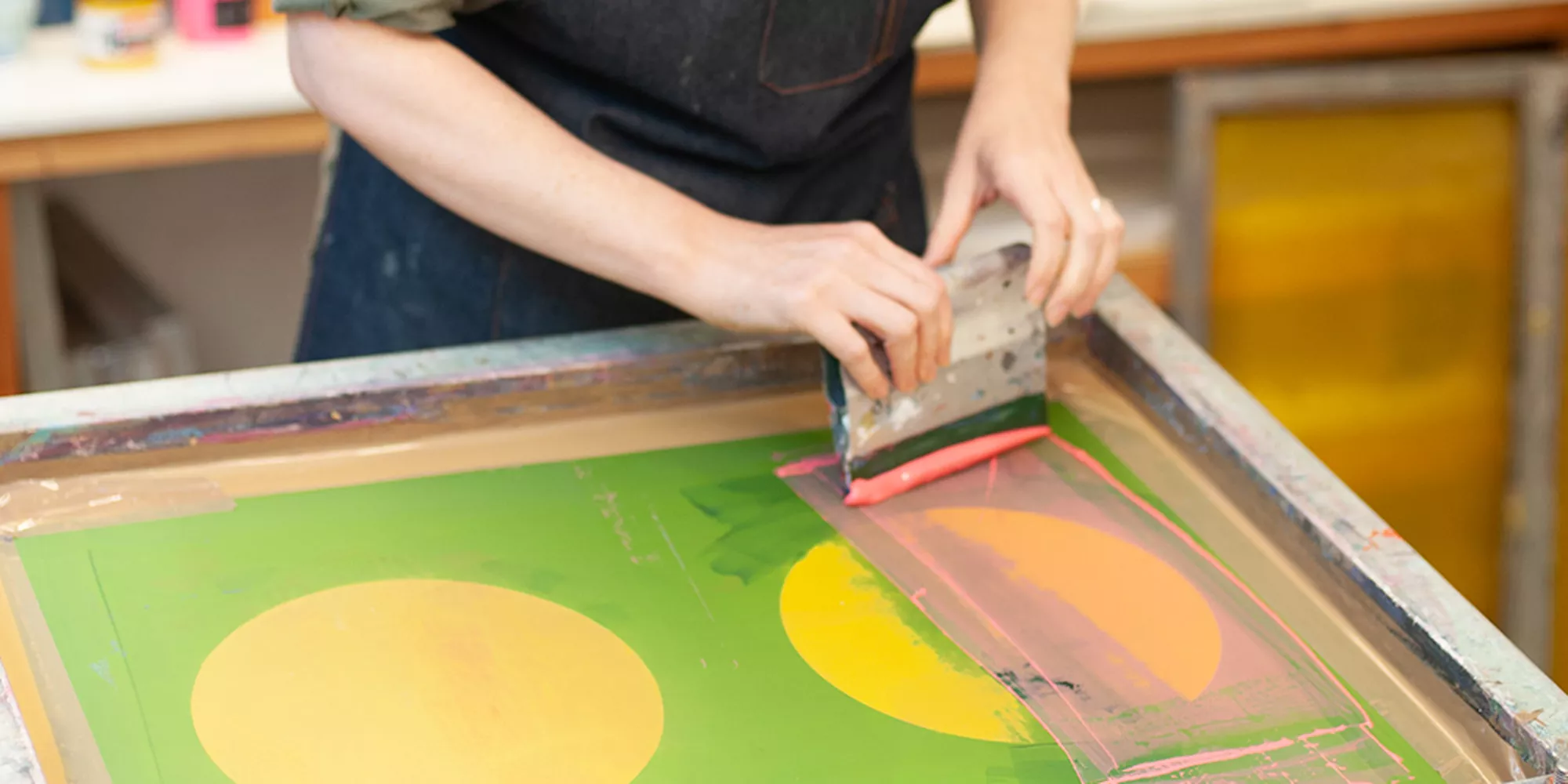
Screen printing stands as one of the oldest and most cherished techniques within the realm of personalized printing. This process entails the fabrication of a stencil, known as a “screen,” which is then employed to transfer multiple coats of ink onto the chosen material. It holds particular favor for items like t-shirts, bags, and various promotional products.
Benefits of Screen Printing for Small Businesses
Screen printing offers numerous advantages that render it an appealing option for small enterprises:
– Resilience: A primary benefit of screen printing is the remarkable durability of the imprints. The ink employed is denser and more vivid, ensuring a prolonged lifespan, even following numerous washing cycles.
– Luminous Hues: Screen printing facilitates the creation of exceptionally brilliant and vibrant colors that are attention-grabbing and striking. This is particularly crucial for businesses striving to establish a powerful brand identity.
– Economical for Bulk Orders: Although the initial configuration can be somewhat demanding, screen printing proves cost-effective when generating substantial quantities. The greater the number of items printed, the lower the individual unit cost.
– Adaptability: It is compatible with an extensive range of materials, including textiles, glass, wood, and plastic. This adaptability can prove advantageous for small businesses seeking to broaden their product offerings.
Ideal Applications and Limitations
Screen printing excels in specific applications, especially for companies aiming to create:
– Merchandise: Classic choices for screen printing include t-shirts, sweatshirts, and tote bags. These items are well-suited for high-volume production, yielding durable and vibrant colors.
– Event Promotion: For significant product launches or events, screen-printed merchandise serves as effective giveaways, generating excitement around your brand.
Despite its strengths, screen printing also presents certain drawbacks:
– Restricted Color Palette: The need for a distinct screen and application for each color makes the process more involved and less feasible for intricate, multi-colored designs.
– High Initial Expenses: The upfront costs associated with screen creation and preparation can be substantial, potentially making it less economical for smaller quantities.
– Reduced Detail Accuracy: Extremely fine details may not reproduce as clearly as with other printing techniques, as screen printing’s precision is limited.
Understanding where screen printing excels helps small businesses leverage its strengths effectively for their branding needs.
Digital Printing
Digital printing has transformed the custom printing industry by providing a contemporary and efficient method for producing prints. In contrast to screen printing, digital printing utilizes a digital image to apply the design directly to a range of surfaces.
Advantages of Digital Printing for Modern Businesses
Digital printing presents several benefits for small businesses aiming to maintain flexibility and responsiveness:
– Rapid Production: Compared to traditional printing, digital printing demands minimal setup, enabling a swift progression from the design phase to the final product.
– Exceptional Clarity: This technique delivers high-resolution prints with remarkable detail, making it ideal for complex designs and graphics.
– Personalized Printing: Digital printing facilitates customization and personalization. This includes printing unique names or information on each piece, making it suitable for engaging specific customer segments or producing limited runs.
– Environmentally Conscious Choices: Due to reduced waste in setup and ink usage, digital printing can be a more sustainable alternative, attracting businesses prioritizing environmental responsibility.
Cost-Effectiveness and Versatility
For small businesses, cost-effectiveness and adaptability are paramount when considering printing methods:
– No Order Minimums: Digital printing differs from screen printing in that it doesn’t necessitate a minimum order size to achieve cost efficiency. This proves advantageous for small businesses requiring flexibility or desiring to experiment with new offerings without the obligation of large orders.
– Diverse Material Compatibility: The digital printing process is compatible with a wide range of materials, including paper, fabric, glass, metal, and more, enabling the creation of diverse product types.
– Print as Needed: This method facilitates on-demand printing, thereby minimizing inventory expenses and simplifying stock management for businesses, preventing excessive inventory commitments.
Best Practices for Digital Printing
Here are the rewritten texts, maintaining the original meaning and language:
To maximize the benefits of digital printing, keep these top tips in mind:
– High-Quality Artwork: Use high-resolution artwork to preserve quality through the printing process. Sharp, clear images will result in well-defined prints.
– Material Compatibility: Different materials interact uniquely with digital printing. Experiment with your designs on the selected material to evaluate their appearance and texture.
– Sample Testing: Prior to placing a large order, ask for samples. This allows you to assess the finished product and make any needed refinements to the design or material.
– Select a Suitable Partner: Collaborate with a trusted printing provider that employs cutting-edge technology and provides dependable customer support to quickly address any concerns or modifications.
The adaptability of digital printing and its capacity to meet the demands of a rapidly evolving market render it a strong option for small businesses aiming to remain competitive and forward-thinking.
With knowledge of both screen and digital printing, you can select the printing technique that aligns best with your requirements, brand image, and financial constraints. Whether your goal is to produce eye-catching merchandise or require adaptable printing solutions at a moment’s notice, a solid grasp of each method’s advantages and drawbacks will enable you to provide high-caliber goods to your clientele and solidify your brand’s position in the marketplace.
Textile Printing
Personalized attire and fabric products have gained popularity among companies aiming to boost their brand’s prominence. Garments adorned with distinctive designs, created through textile printing techniques, can transform clients into walking billboards, simultaneously providing a personal connection that appeals to them.
Techniques Used in Textile Printing
Textile printing encompasses a range of techniques, enabling small businesses to select the one that aligns best with their requirements, preferences, and financial constraints. Here are some widely used methods:
– Screen Printing: This traditional method is frequently chosen for bulk orders. It entails creating a stencil or screen of your design, which is subsequently utilized to transfer ink onto fabric. Screen printing is capable of producing vivid and long-lasting designs, making it well-suited for items like t-shirts and hoodies.
– Digital Textile Printing: As suggested by its name, this technique involves digitally printing your design onto fabric. It is more suitable for detailed designs or shorter production runs, as it accommodates multiple colors and intricate patterns without requiring screens.
– DTG (Direct-to-Garment) Printing: A subset of digital printing, this method sprays ink directly onto the garment, akin to a large inkjet printer designed for clothing. Ideal for detailed prints and smaller quantities, it delivers high-quality outcomes with minimal setup requirements.
– Heat Transfer Printing: is a technique where designs are first printed onto transfer paper. These designs are then transferred onto fabric using heat. This method is valued for its ability to accurately transfer intricate images, making it ideal for producing promotional items such as tote bags and personalized sports jerseys.
Common Uses in Apparel and Accessories
Textile printing opens up a world of opportunities in the realm of clothing and accessories. Some typical applications are:
– Corporate T-Shirts: Ideal for corporate functions, marketing giveaways, or staff uniforms.
– Tailored Hats and Caps: An excellent method for providing a discreet yet impactful brand message.
– Bespoke Canvas Totes: These can be used as environmentally conscious choices for client or employee presents.
– Athletic Wear: Customizing team jerseys, shorts, or hats can enhance team cohesion and increase brand visibility.
SMEs can utilize these printed fabrics both as instruments for advertisement and as a means of generating income through the sale of branded items.
Considerations for Quality and Durability
Selecting the appropriate textile printing technique also necessitates evaluating the end product’s quality and lifespan. For commercial entities, the following are crucial aspects to consider:
– Kind of Fabric: Verify that the selected method aligns with the specific fabric. As an example, cotton is particularly suited for screen printing, whereas synthetic materials may benefit more from digital printing.
– Laundry and Upkeep: Reflect on how the imprinted fabric will endure routine washing. Screen printing, for example, is recognized for its extended durability.
– Color Resilience: Confirm that the colors stay vibrant over an extended period and are not prone to rapid fading.
– Ecological Effect: Should environmental responsibility be a main concern, certain printing methods might be more compatible with sustainable business conduct.
Offset Printing
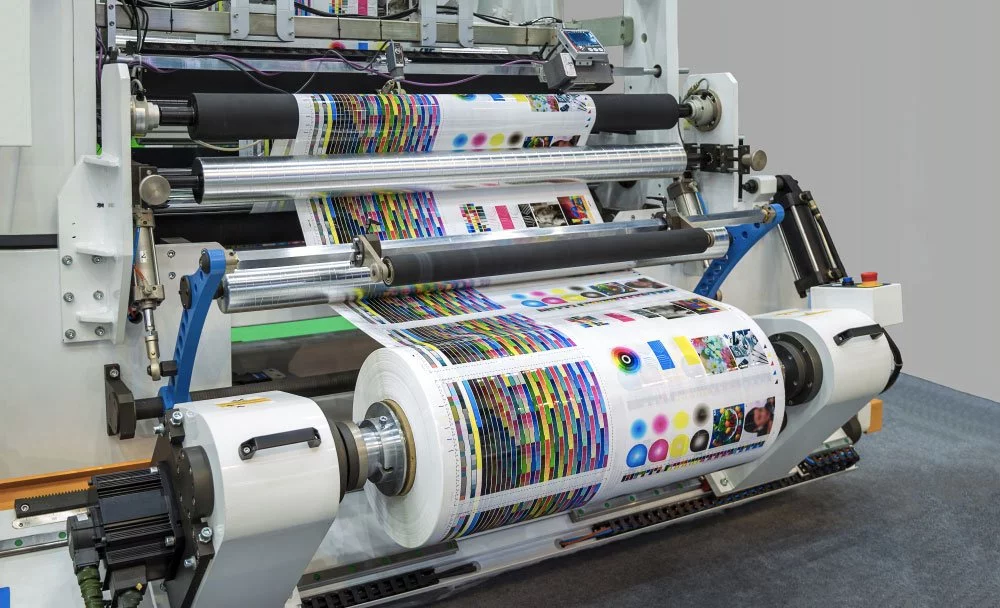
Offset printing, a well-established technique, is ideal for fulfilling large-scale printing requirements. Recognized for its ability to deliver superior quality while remaining economical in high-volume production, it is frequently employed for the creation of items such as brochures, business cards, and various other forms of marketing collateral that are essential for businesses.
Understanding the Offset Printing Process
Offset lithography, also known as offset printing, is a process where an inked image is transferred from a plate to a rubber blanket before being applied to the printing surface. This indirect approach allows for precise control over print quality and color blending.
Here’s a simplified explanation of the process:
1. Pre-Press Setup: Designs are digitally prepared and then transferred to plates, with each color typically requiring its own plate.
2. Inking Process: The inked image from the plates is initially transferred to a rubber cylinder.
3. Printing: The image is then transferred from the rubber cylinder or blanket onto paper or another appropriate printing surface.
This method is particularly well-suited for long print runs, where consistency and high-definition quality are essential.
Suitable Projects for Offset Printing
Offset printing is particularly advantageous for endeavors requiring both substantial volume and superior quality. Small businesses might find it suitable for:
– Business Cards: It produces sturdy, premium business cards with a noticeable texture.
– Posters and Flyers: Suitable for promotional initiatives that necessitate vibrant hues and sharp clarity.
– Magazines and Catalogs: For retail or publishing enterprises, offset guarantees uniform print excellence throughout numerous pages.
– Stationery: Personalized letterheads, envelopes, and similar stationery items contribute to a polished, unified brand image.
Through the creation of items that regularly interact with a client’s hands or workspace, offset printing enables small businesses to make a significant impact.
Comparing Costs with Other Methods
When assessing expenses, small businesses should consider the following factors:
– Quantity: As the quantity rises, offset printing becomes more budget-friendly. For very large print quantities, it is typically the most economical option.
– Initial Expenses: Setup costs, such as creating plates or initial print runs, are associated with offset printing. These make smaller print runs less cost-effective than digital printing, which has minimal upfront costs.
– Production Time: Offset printing usually requires a longer timeframe, especially for the setup process. For urgent deadlines, digital printing may be the better choice.
– Quality Versus Quantity: When high precision, superior quality, and accurate color reproduction are essential, offset printing’s initial cost can be justified compared to alternative methods.
By thoughtfully analyzing these elements, small businesses can make well-informed choices about the printing method that best suits their project requirements and budget limitations. Each printing technique offers distinct benefits and attractions, enabling businesses to convey their message in an impactful way.
Conclusion
Custom printing presents a superb opportunity for small companies to make a distinct impression and engage clients in a way that is hard to forget. You might select conventional screen printing, valued for its lively hues and longevity, or go for digital printing, appreciated for its accuracy and efficiency. Each technique provides its own set of advantages.
Keep in mind to think about elements such as your financial plan, how the printed items will be used, and your company’s branding objectives when deciding on a printing process. Matching your decision with your brand’s message will not just elevate your company’s appearance but also build a stronger bond with your customer base. Enjoy the printing process!

